How I Select Saris for my BJD Dresses and What I Make Out of Them
By Iryna of Whispering Grass
Sometimes you have to think outside the box (or box store) to achieve the results you desire. Doll artist Iryna of Whispering Grass is also a seamstress, and she has found that vintage Indian saris lend themselves to extraordinary period style doll clothing.
~~~~~
I like all sorts of “how-to” posts where people tell a bit more about their creative process, so I decided to share my sari hunting experiences. I’ll tell you how I choose saris for my BJD dress projects and what I do with them.
I was searching for a cotton fabric with a certain style of pattern for a Renaissance dress, and could find nothing suitable.
And then eBay offered me this lot… It was for vintage Indian saris. After a quick look, I realized they might work. Soon I found what I was searching for, and made a dress. The fabric was so gorgeous and unique that I fell in love with it, so I decided to buy more saris and to be inspired by their material and style instead of picking a pattern for a certain design.
After purchasing several saris I developed a search criteria. I’ve learned that there are printed patterns and woven patterns, and the woven ones are much more appealing to me. The patterns are clear, they stand out better, and the woven borders give a noble heaviness to the extremely thin silk fabric of a sari, so it falls in gorgeous drapes. Sometimes they are a combination woven and printed, and seeing such saris I often think that it would be much better if the “body” of the sari would be left in a uniform color instead of having an out-of-scale printed pattern. What looks great on people is not always suitable for dolls!
I learned eventually how to distinguish a sari with a woven pattern from the printed ones by looking at small preview photos – of course, there are mistakes, as some patterns may look great on the preview but look like crap full size! It’s a very hard work to browse through all that green-maroonish printed stuff to catch the true gems among them. The patterns, whether woven or printed, should be in a doll scale, and that knowledge also comes with experience (and buying, and comparing what you receive with what you saw in the seller’s photos).
Some saris are too old or were stored in a humid place, so they fall apart in your hands. Once I purchased two gorgeous saris, their “falls” were to die for, with golden threads and in-scale patterns, but the fabric was so fragile I could do nothing with it.
I also purchased two saris with printed patterns, and they were much less impressive than in the photos.
Sometimes it’s hard to say if the pattern is woven or printed, as the photos are made with a phone camera and are too blurry. Then there are a color distortions involved. Once I bought one that I thought had deep metallic green, but it turned out to be a light steel grey (although it was amazing anyway).
So the search process is a very time consuming task, and I discard A LOT of what I find. I often toss some saris into my watch list on eBay, and they hang there for a week – I come and look at them again and again. Often they’re discarded eventually. That’s because I want my BJD dresses to be works of art.
The saris are old and previously worn, so they have spots and tears here and there. I don’t mind tiny imperfections: you know, traditional doll artists intentionally wear out fabrics of which they made doll clothes, so they look more “real” on a doll and have a bit of a “history”, or they use a vintage worn fabrics.
Before I start sewing, I wash all my saris in a washing machine set on “Delicate”. If a sari is too fragile, it falls apart after washing. Only a sturdy sari can withstand the procedure.
Saris are made of various fabrics, but I use only pure silk, because it gives a unique feel to the dress. I’ve never seen such a fabrics in local shops. All the silk fabrics there differ from Indian silks. Indian silk saris are usually extremely thin with a very fine warp thread and a bit thicker weft thread. Only a few saris that I purchased were made of a heavier fabric that resembled fine cotton.
Every woven sari is unique. Sometimes a seller has two or even three saris of the same color and pattern, but they usually have printed patterns, not woven. I haven’t seen two identical saris that met all my criteria, and if so, I’d buy only one of them.
If a sari is in perfect condition, it’s possible to make two dresses from it, but in this case I make two different designs.
As I have a great interest in period clothing, I like to make dresses that resemble Renaissance and Medieval clothing. Surprisingly certain Indian patterns can play that role perfectly. Wide woven borders look very much like those we see in the paintings of old masters.
Indian silk, after being soaked with just water, creates beautiful folds that keep their shape, and no starching or other method of fixing the folds is required. This quality has a disadvantage: you can only imagine what I take out of the washing machine! So I iron every sari, then cut out the details, gather the pleats, form the folds with water and leave the pieces to dry. Then the neatly folded details are assembled into a dress.
I created an “all sizes” design: this means that the dress can fit on a variety of doll bodies of a similar height, no matter if the doll is slim or curvy. Two handmade laces allow you to adjust the collar and the waist of the dress to the size you need. Fine pleats on the bodice softly embrace doll’s chest, coordinating with the pleats on the skirt.
Iryna’s silk doll dresses may be found via her website Whispering Grass, or visit her Whispering Grass Etsy shop.
~~~~~
Iryna on the hunt for Saris:

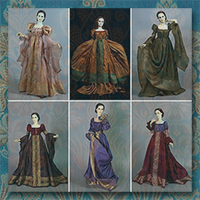
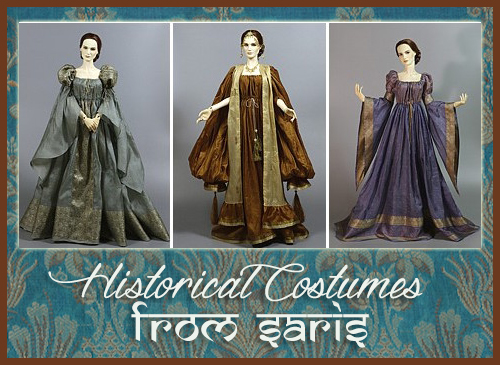










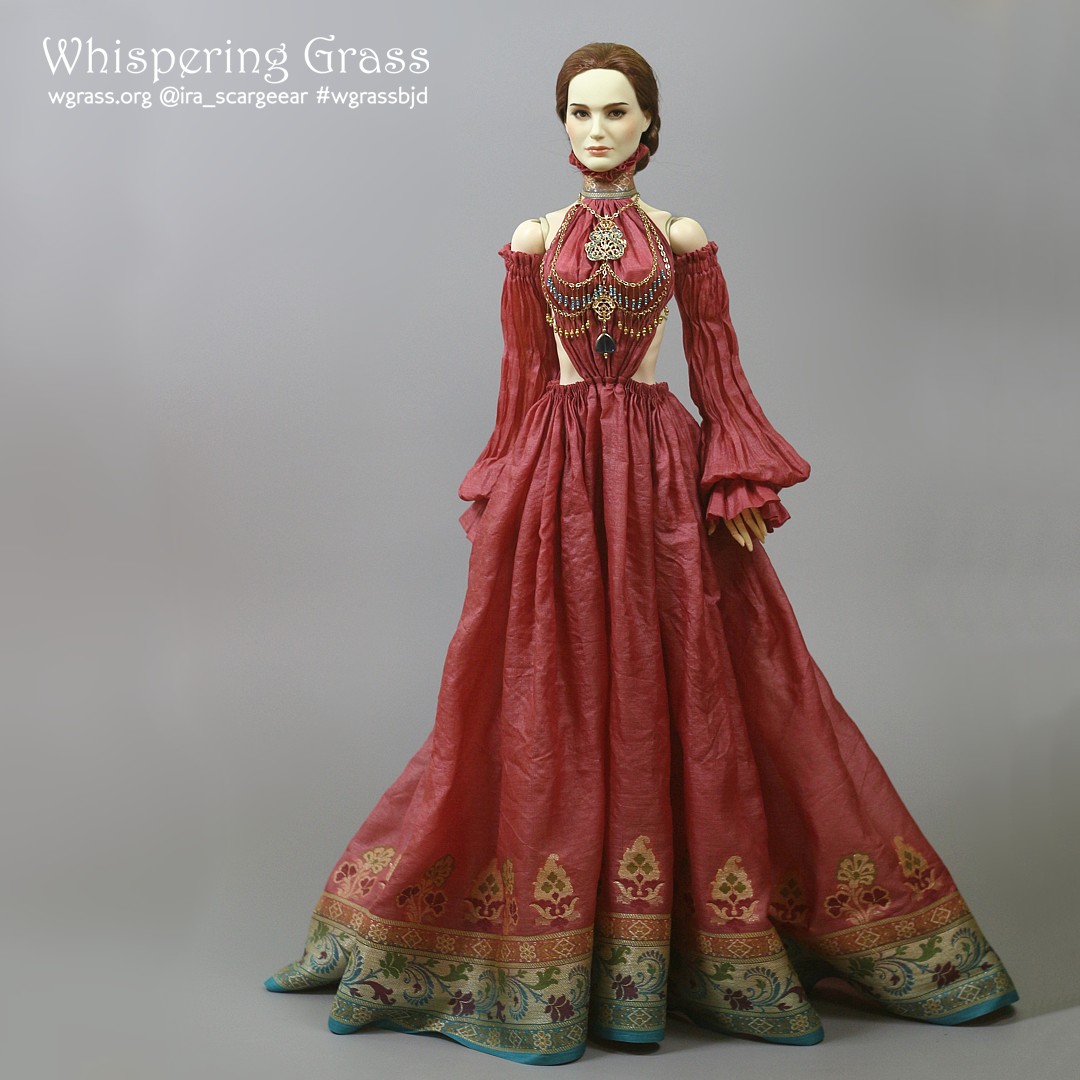
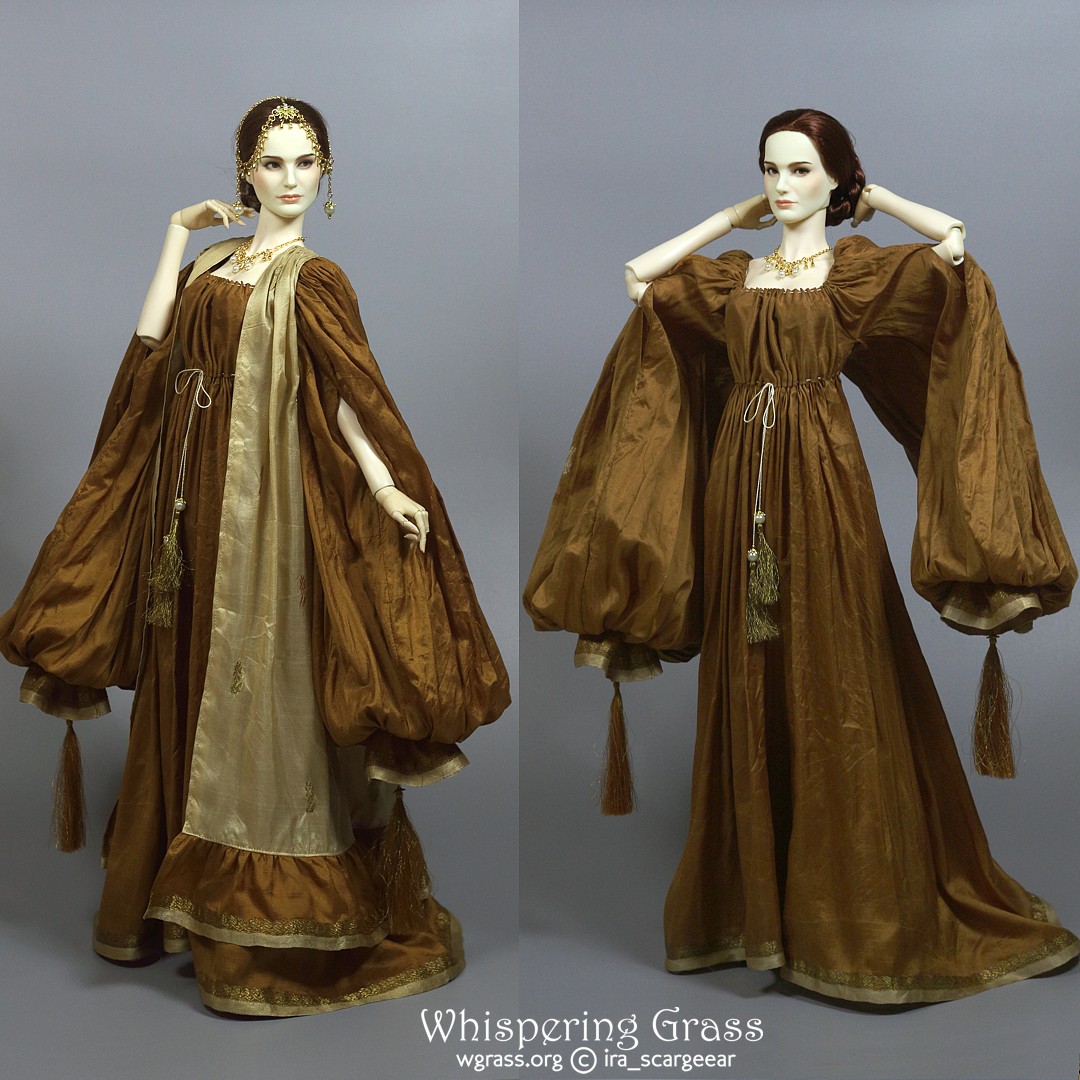
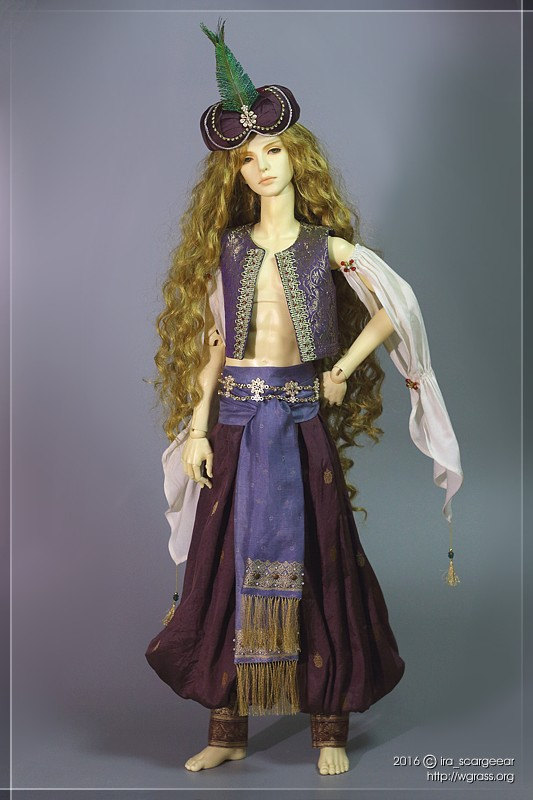

Absolutely gorgeous work! Scargeer is a goddess.